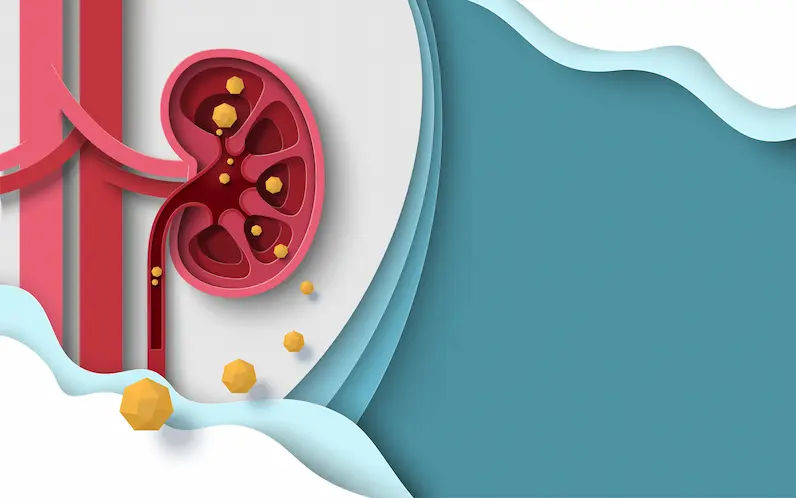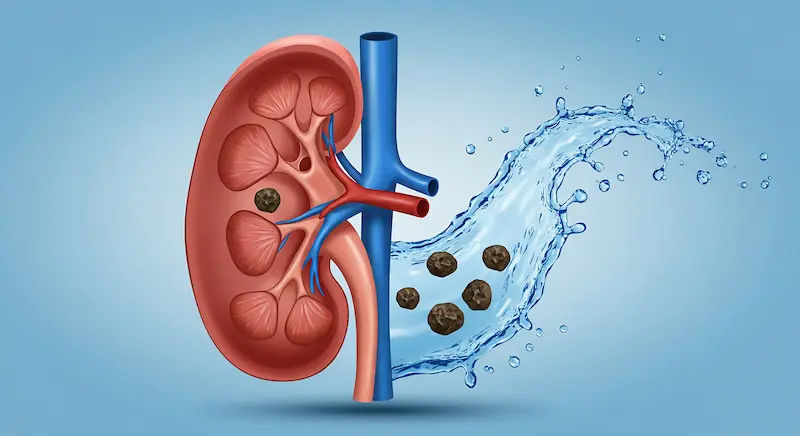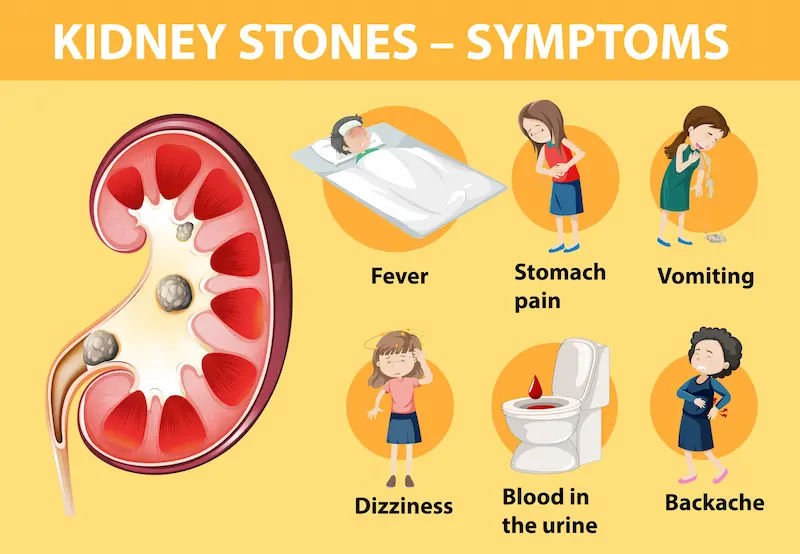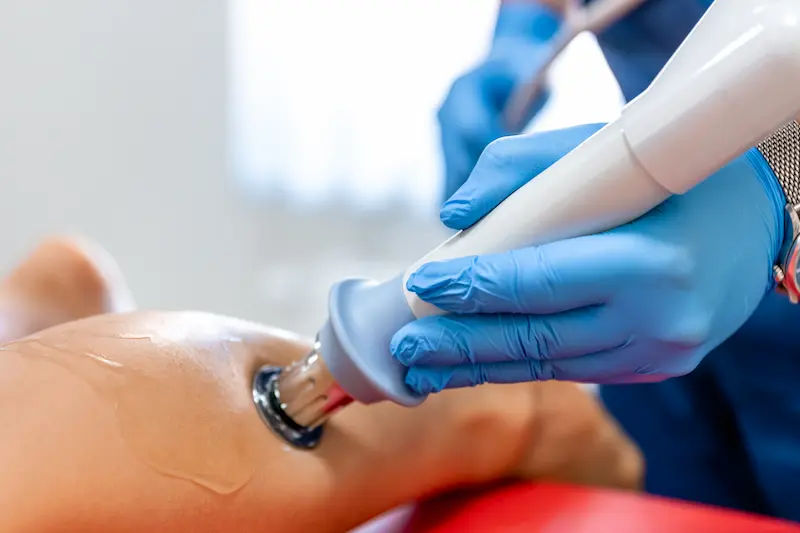Guide to Does Kidney Stones Pain Occur Frequently Summer
Does your kidney stone pain spike in the summer? You're not alone. Learn why heat and dehydration make you more vulnerable and get essential tips for prevention and relief this season.

Written by Dr. M L Ezhilarasan
Reviewed by Dr. Rohinipriyanka Pondugula MBBS
Last updated on 7th Oct, 2025

Introduction
As temperatures rise, so does the incidence of a particularly painful condition: kidney stones. If you've ever experienced the excruciating pain of a stone, you know it's an ordeal you never want to repeat. And if you haven't, summer is the time to be most vigilant. This article directly addresses a common concern: does kidney stones pain occur frequently during the hotter months? The short answer is yes, and there are clear, scientific reasons why. The combination of increased temperatures, higher rates of dehydration, and lifestyle changes creates a perfect storm for stone formation. This comprehensive guide will not only explain the "why" behind the summer surge but will also equip you with practical knowledge to recognize the symptoms, understand the patterns of pain, and, most importantly, implement effective prevention strategies. We’ll dive deep into everything from the initial warning signs of kidney stones in hot weather to the latest treatment options, empowering you to enjoy a stone-free season.
The Summer Surge: Why Kidney Stone Risk Peaks in the Heat
Summer is synonymous with fun in the sun, but for your kidneys, it can be a period of high alert. Research consistently shows a significant spike in emergency department visits for kidney stones during the summer months. This isn't a coincidence; it's a direct consequence of how our bodies interact with a hotter environment.
The Dehydration Domino Effect
The primary culprit behind the summer stone surge is dehydration. When you're exposed to heat, whether from the sun or intense activity, your body sweats more to cool down. If you don't adequately replenish these lost fluids, your body enters a state of dehydration. To conserve water, your kidneys produce less urine, and the urine they do produce becomes highly concentrated. This concentrated environment is the ideal breeding ground for the crystals that eventually clump together to form stones.
Concentrated Urine and Crystal Formation
Think of your urine as a solution that can hold certain minerals and salts—like calcium, oxalate, and uric acid—in a dissolved state. When you're well-hydrated, these substances are diluted and pass harmlessly out of your body. However, with dehydration, the solution becomes supersaturated. There's simply not enough fluid to keep these particles dissolved. As a result, they begin to precipitate out of the urine, forming tiny crystals. These crystals can then attract other particles, gradually building up into a solid mass—a kidney stone. This process is fundamentally why the risk of stones is so much higher when fluid intake doesn't match fluid loss.
Consult Top Specialists
Recognizing Kidney Stone Pain: More Than Just a Backache
Kidney stone pain, often called renal colic, is infamous for its intensity. It's crucial to distinguish it from a typical muscle ache, as prompt recognition can lead to faster treatment.
The Classic Signs: Renal Colic and Its Agony
The pain typically occurs when a stone moves from the kidney into the narrow ureter—the tube connecting the kidney to the bladder. This movement causes a blockage, and the resulting pressure buildup triggers spasms in the ureter. The pain is often described as:
- Sudden and severe: It can wake you from sleep.
- Wavelike (colicky): It comes in intense crescendos and decrescendos.
- Located in the flank or back: Typically on one side, below the ribs.
A key characteristic is that the pain often migrates. As the stone travels down the ureter, the pain can radiate to the lower abdomen and groin. This migratory nature is a hallmark sign.
Beyond the Flank: Other Symptoms to Watch For
While pain is the main event, other symptoms frequently accompany it:
- Painful urination (dysuria): Especially as the stone nears the bladder.
- Blood in the urine (hematuria): This can be pink, red, or brown.
- Nausea and vomiting: A common nervous system response to severe pain.
- Urgency and frequency: A persistent feeling of needing to urinate.
- Fever and chills: This can indicate an infection, which is a medical emergency requiring immediate attention.
Does Kidney Stone Pain Occur Frequently? Understanding the Patterns
This is a critical question for sufferers. The pain is not typically a constant, unchanging ache. Instead, it follows a pattern related to the stone's movement and the body's response.
Acute Episodes vs. Dull Aches
The severe, debilitating pain of renal colic is an acute episode. It occurs when the stone is actively causing a blockage and ureteral spasms. These episodes can last from 20 to 60 minutes. Between these acute attacks, you might experience a dull, persistent ache in your back or side, or you may feel no pain at all. So, while the severe pain is episodic, the underlying condition persists until the stone is passed or removed. The frequency of these acute episodes can vary from multiple times a day to less often, depending on the stone's size and location.
What Triggers a Pain Flare-Up?
Pain often flares up with specific activities. Hydration can actually be a trigger; drinking a large amount of fluid can increase urine production, pushing the stone along and causing a new bout of pain. Physical activity, like jogging or jumping, can also jostle the stone, leading to a painful episode. Understanding that the pain coming and going is normal can help you manage the anxiety that accompanies this condition.
Who is Most at Risk for Summer Kidney Stones?
While anyone can develop a kidney stone, certain factors significantly increase your susceptibility, especially during the summer.
Demographic and Lifestyle Risk Factors
- Geography: People living in hot, dry climates or at high altitudes have a higher baseline risk.
- History: If you've had a kidney stone before, you have a 50% chance of developing another within 5-10 years.
- Family History: A genetic predisposition plays a role.
- Occupation: Jobs that involve physical labor in hot environments (e.g., construction, landscaping) dramatically increase risk due to chronic dehydration.
The Role of Diet and Pre-existing Conditions
- Diet: High intake of sodium (salt), animal protein, and oxalate-rich foods (spinach, nuts, chocolate) contributes to stone formation.
- Obesity: High body mass index (BMI) is a significant risk factor.
- Medical Conditions: Diseases like hyperparathyroidism, renal tubular acidosis, and chronic digestive diseases can alter urine composition.
Your Action Plan: Preventing Kidney Stones Before They Start
Prevention is always better than cure. A proactive approach can significantly reduce your risk of experiencing the agony of a summer stone.
Hydration is Non-Negotiable: How Much is Enough?
This is the single most important step. The goal is to produce about 2-2.5 liters of pale, clear urine per day. In the summer, this often means drinking 3 liters or more of fluid, primarily water. A good rule of thumb is to check your urine color; it should be light yellow or clear. Carry a water bottle with you and sip consistently throughout the day.
Smart Dietary Choices for Stone Prevention
Dietary management is your second line of defense.
Foods to Embrace: The Citrus Advantage
Citrus fruits like lemons, limes, and oranges contain citrate, a natural inhibitor of kidney stone formation. Citrate binds to calcium in the urine, preventing it from crystallizing with oxalate. Starting your day with a glass of water with fresh lemon juice is an excellent preventative habit.
Foods to Limit: Sodium and Oxalates
- Sodium: A high-salt diet increases calcium in the urine, promoting stone formation. Avoid processed foods, canned soups, and salty snacks.
- Oxalates: If you are a recurrent calcium oxalate stone farmer, your doctor may advise moderating intake of high-oxalate foods like spinach, rhubarb, almonds, and beets. It's not about complete elimination, but balanced consumption with calcium-rich foods (which can bind oxalate in the gut).
What to Do If You Suspect a Kidney Stone?
If you experience sudden, severe back or abdominal pain, it's crucial to act wisely.
First-Step Relief and When to Seek Immediate Care
- Hydrate: Drink water to help move the stone along, but don't overdo it to the point of nausea.
- Pain Management: Over-the-counter nonsteroidal anti-inflammatory drugs (NSAIDs) like ibuprofen can help manage pain and inflammation.
- Seek Immediate Medical Attention if you have: fever with chills, inability to keep fluids down, severe uncontrollable pain, or no urine output.
These are signs of a serious complication like an infection or complete blockage. If symptoms persist beyond a few hours or are severe, consult a doctor online with Apollo24|7 for immediate guidance.
Diagnostic Steps: From Urine Tests to CT Scans
A doctor will typically perform a urinalysis to check for blood and signs of infection. Imaging tests are key to confirming the diagnosis and determining the stone's size and location. A non-contrast CT scan is the gold standard as it provides detailed images quickly. Apollo24|7 offers convenient home collection for urine tests, making the initial diagnostic steps easier.
Treatment Options: From Waiting it Out to Medical Intervention
The right treatment depends entirely on the stone's size, location, and composition.
Passing a Stone Naturally: The Home Care Protocol
Most small stones (less than 5-6mm) can pass on their own with time. This process involves staying well-hydrated, taking pain medication as needed, and possibly using an alpha-blocker medication (like tamsulosin) prescribed by your doctor to relax the ureter muscles and ease passage. Your doctor may ask you to strain your urine to catch the stone for analysis.
Medical Procedures: ESWL, Ureteroscopy, and More
For larger stones or those causing complications, intervention is necessary:
- Extracorporeal Shock Wave Lithotripsy (ESWL): Uses sound waves to break the stone into smaller pieces that can be passed more easily.
- Ureteroscopy: A thin scope is passed through the urethra and bladder to the stone, which is then broken up with a laser and removed.
- Percutaneous Nephrolithotomy (PCNL): A surgical procedure for very large stones, involving a small incision in the back to remove the stone directly from the kidney.
Conclusion
The link between summer heat and kidney stones is undeniable, driven primarily by the challenge of staying hydrated. Understanding that the severe pain does occur more frequently during this season empowers you to take proactive steps. By recognizing the symptoms early, adopting a preventative lifestyle centered on ample fluid intake and a balanced diet, and knowing when to seek professional help, you can significantly reduce your risk and avoid a painful ordeal. Remember, your kidneys work hard to filter your blood, and they need plenty of water to do their job effectively, especially when the mercury rises. If you have a history of stones or are experiencing concerning symptoms, don't hesitate to seek expert advice. If your condition does not improve after trying these methods, book a physical visit to a urologist with Apollo24|7 for a comprehensive evaluation and personalized treatment plan. Stay cool, stay hydrated, and enjoy a healthy, stone-free summer.
Consult Top Specialists
Consult Top Specialists

Dr. Anand Ravi
General Physician
2 Years • MBBS
Bengaluru
PRESTIGE SHANTHINIKETAN - SOCIETY CLINIC, Bengaluru

Dr Syed Mateen Pasha
General Physician
2 Years • MBBS
Bengaluru
PRESTIGE SHANTHINIKETAN - SOCIETY CLINIC, Bengaluru

Dr. Syed Ismail Ali
General Practitioner
7 Years • MBBS
Hyderabad
Apollo 24|7 Clinic, Hyderabad

Dr. Harshendra Jaiswal
General Physician/ Internal Medicine Specialist
12 Years • MBBS , MD (General medicine)
Kolkata
108 DHANA DHANVANTARI Clinic, Kolkata
(25+ Patients)
Dr. Thandra Ramoji Babu
General Physician/ Internal Medicine Specialist
5 Years • MBBS, DNB(General Medicine)
Warangal
Sai Ram multi-specialty hospital, Warangal
Consult Top Specialists

Dr. Anand Ravi
General Physician
2 Years • MBBS
Bengaluru
PRESTIGE SHANTHINIKETAN - SOCIETY CLINIC, Bengaluru

Dr Syed Mateen Pasha
General Physician
2 Years • MBBS
Bengaluru
PRESTIGE SHANTHINIKETAN - SOCIETY CLINIC, Bengaluru

Dr. Syed Ismail Ali
General Practitioner
7 Years • MBBS
Hyderabad
Apollo 24|7 Clinic, Hyderabad

Dr. Harshendra Jaiswal
General Physician/ Internal Medicine Specialist
12 Years • MBBS , MD (General medicine)
Kolkata
108 DHANA DHANVANTARI Clinic, Kolkata
(25+ Patients)
Dr. Thandra Ramoji Babu
General Physician/ Internal Medicine Specialist
5 Years • MBBS, DNB(General Medicine)
Warangal
Sai Ram multi-specialty hospital, Warangal
More articles from Kidney stones
Frequently Asked Questions
Can drinking certain beverages increase my risk of kidney stones in summer?
Yes. While water is best, sugary sodas and some iced teas can be problematic. High fructose corn syrup in sodas can increase stone-forming substances in urine. Some iced teas are high in oxalates. Stick to water, lemon water, or citrate-rich fluids.
I work outdoors all day. How can I prevent kidney stones?
As an outdoor worker, you are at high risk. Be militant about hydration. Drink at least one cup (250ml) of water every hour. Wear light, breathable clothing to minimize sweating, and take breaks in the shade. Consider adding a squeeze of lemon to your water for an extra preventative boost.
Is the pain from a kidney stone constant until it passes?
No, it's often not constant. The severe, 'colicky' pain comes in waves when the stone is moving or causing a blockage. Between these episodes, you might feel a dull ache or no pain at all, even though the stone is still present.
How long does it typically take to pass a kidney stone?
This depends on the stone's size and location. A small stone (less than 4mm) may pass in a week or two. Larger stones (5-6mm) can take up to 3-4 weeks and are less likely to pass without intervention. Stones larger than 6mm often require medical treatment.
Are kidney stones more common in men or women?
Historically, men have been about twice as likely to develop kidney stones as women. However, recent studies show the gap is narrowing, possibly due to dietary and lifestyle changes. Regardless of gender, the summer risk factors apply to everyone.




